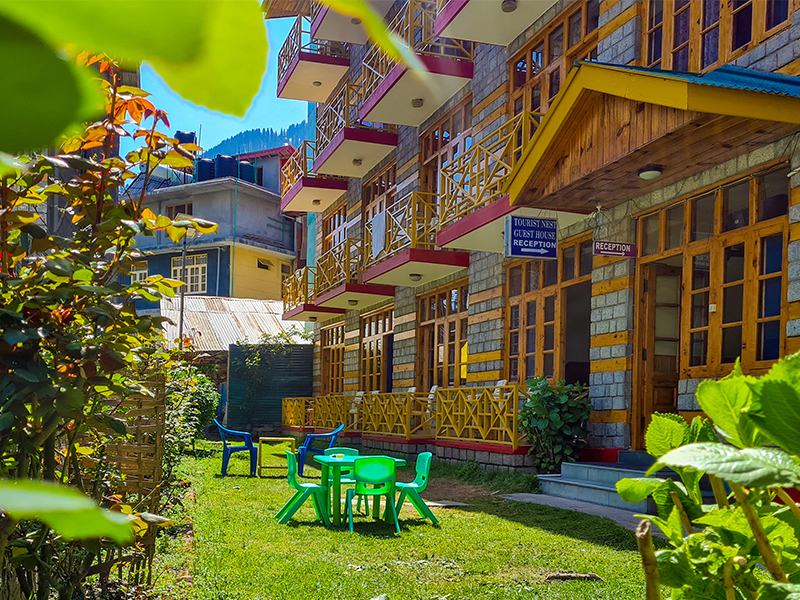












Atal Tunnel, formerly known as the Rohtang Tunnel, is a remarkable engineering marvel situated in the Pir Panjal range of the Himalayas in the Indian state of Himachal Pradesh. Named after the former Prime Minister of India, Atal Bihari Vajpayee, this tunnel holds significant historical and strategic importance.
Construction of the tunnel began in 2010, under the leadership of the Border Roads Organization (BRO), and it was completed in October 2020. The tunnel was inaugurated by Prim ...









The Atal Tunnel, located in Himachal Pradesh, India, is a marvel of engineering and a significant infrastructure project. Here are the top things to know about the Atal Tunnel:
Length and Location: The Atal Tunnel is the longest highway tunnel in the world at an altitude of over 10,000 feet. It is 9.02 kilometers (5.6 miles) long and passes under the Rohtang Pass in the Pir Panjal range of the Himalayas.
Connectivity: The tunnel connects Manali to the Lahaul-Spiti Valley in Himachal Pradesh. Before the tunnel was built, the Rohtang Pass was the only way to access Lahaul-Spiti, but it remained closed during the winter due to heavy snowfall.
Strategic Importance: The tunnel holds strategic significance as it provides all-weather connectivity to the border areas of Ladakh, especially important for the movement of troops and supplies.
Construction Challenges: The construction of the tunnel faced numerous challenges, including the difficult terrain, high altitude, and extreme weather conditions. It took nearly 10 years to complete the project.
Inauguration: The tunnel was inaugurated by Prime Minister Narendra Modi on October 3, 2020. It was named after former Prime Minister Atal Bihari Vajpayee, who had a vision for better connectivity in the region.
Impact on Tourism: The tunnel has had a significant impact on tourism in the region, allowing tourists to visit Lahaul-Spiti throughout the year. It has also boosted the local economy by providing better access to markets and healthcare.
Engineering Feats: The tunnel incorporates several engineering innovations, including a semi-transverse ventilation system, CCTV cameras for surveillance, and a firefighting system.
Reduced Travel Time: The tunnel has reduced the travel time between Manali and Keylong (the administrative center of Lahaul-Spiti) by about 3-4 hours, making transportation more efficient and convenient.
The Atal Tunnel stands as a testament to India's engineering prowess and its commitment to improving infrastructure in remote and mountainous regions.
Best time to Visit Rohtang Pass Is From April To October
Atal Tunnel, formerly known as the Rohtang Tunnel, is a remarkable engineering marvel situated in the Pir Panjal range of the Himalayas in the Indian state of Himachal Pradesh. Named after the former Prime Minister of India, Atal Bihari Vajpayee, this tunnel holds significant historical and strategic importance.
Construction of the tunnel began in 2010, under the leadership of the Border Roads Organization (BRO), and it was completed in October 2020. The tunnel was inaugurated by Prime Minister Narendra Modi on October 3, 2020, marking a momentous occasion in India's infrastructure development.
The history of Atal Tunnel is intertwined with the challenges posed by the Rohtang Pass, which served as the only gateway to the Lahaul and Spiti valleys. The pass was notorious for its unpredictable weather conditions, frequent landslides, and treacherous terrain, making it inaccessible for a significant portion of the year. This resulted in isolation for the residents of Lahaul and Spiti, hindering socio-economic development and posing logistical challenges for the Indian armed forces.
Recognizing the need for a year-round road link to connect Manali with Lahaul-Spiti valley, the Indian government initiated the ambitious project to construct a tunnel beneath the Rohtang Pass. The construction of Atal Tunnel aimed to provide all-weather connectivity, reduce travel time, and enhance strategic mobility in the region.
The construction of Atal Tunnel posed several engineering challenges, including the excavation of nearly 14 kilometers through the rocky terrain of the Pir Panjal range, at an altitude of over 3,000 meters. The project involved the use of state-of-the-art tunneling techniques, including the New Austrian Tunneling Method (NATM), to ensure stability and safety.
Upon its completion, Atal Tunnel emerged as the longest highway tunnel in the world situated at such a high altitude. It significantly reduces the distance between Manali and Keylong, the administrative center of Lahaul-Spiti, by approximately 46 kilometers, cutting travel time by several hours. Additionally, the tunnel enhances strategic connectivity by providing all-weather access to border areas, facilitating the movement of troops and supplies.
Length and Altitude: Atal Tunnel, situated in the Pir Panjal range of the Himalayas, is approximately 9.02 kilometers (5.6 miles) long. It runs at an altitude of over 3,000 meters (10,000 feet) above sea level, making it one of the highest road tunnels in the world.
Engineering Marvel: The tunnel is an exceptional engineering feat, constructed through challenging terrain and harsh weather conditions. It involved cutting through solid rock and negotiating complex geological formations.
All-Weather Connectivity: Atal Tunnel provides all-weather connectivity between Manali and Keylong, reducing the travel distance by approximately 46 kilometers. It ensures year-round access to the remote Lahaul and Spiti valleys, which were previously cut off from the rest of the country during winter months due to heavy snowfall.
Construction Time: The construction of Atal Tunnel began in 2010, and it was completed in October 2020, after nearly a decade of relentless effort. The project faced numerous challenges, including adverse weather, high altitude, and logistical complexities.
Strategic Importance: The tunnel holds significant strategic importance as it enhances the military's ability to swiftly move troops and supplies to border areas, particularly along the India-China border. It strengthens India's defense infrastructure and reduces the response time for military operations in the region.
World's Longest Highway Tunnel at High Altitude: Atal Tunnel holds the distinction of being the longest highway tunnel situated at such a high altitude. Its completion has placed India on the global map for infrastructure development and engineering prowess.
Inauguration by Prime Minister Narendra Modi: The tunnel was inaugurated by Prime Minister Narendra Modi on October 3, 2020, commemorating the birth anniversary of former Prime Minister Atal Bihari Vajpayee, after whom the tunnel was renamed.
Tourist Attraction: Apart from its strategic and economic significance, Atal Tunnel has also emerged as a popular tourist attraction. It offers breathtaking views of the surrounding Himalayan landscape, attracting tourists and adventure enthusiasts from across the country.
Improved Socio-Economic Development: The tunnel has facilitated enhanced socio-economic development in the region by improving access to markets, healthcare, education, and other essential services for the residents of Lahaul and Spiti valleys.
Tunnel Lighting and Safety Measures: Atal Tunnel is equipped with state-of-the-art lighting, ventilation, and safety systems to ensure the smooth and secure movement of vehicles through the tunnel, even during adverse weather conditions or emergencies.
The Atal Tunnel, named after former Indian Prime Minister Atal Bihari Vajpayee, is a remarkable engineering achievement located in Himachal Pradesh. This 9.02-kilometer-long tunnel, the longest highway tunnel above 10,000 feet in the world, was constructed to provide year-round connectivity between Manali and the Lahaul-Spiti Valley, overcoming extreme weather and challenging terrain. Inaugurated in October 2020, the tunnel significantly reduces travel time and distance to Leh, enhancing economic growth, tourism, and strategic military access in the region. Its construction faced numerous difficulties, including harsh conditions and geological challenges, but stands today as a testament to human ingenuity and perseverance.
The Himalayan Mountains are a majestic mountain range in South Asia, spanning five countries. They boast the world's highest peaks, including Mount Everest. These young, growing mountains feature rugged, snow-capped peaks, deep valleys, and glaciers. The Himalayas influence regional climate, harbor unique biodiversity, and hold cultural and spiritual significance. They attract adventurers, nature lovers, and spiritual seekers from around the world.